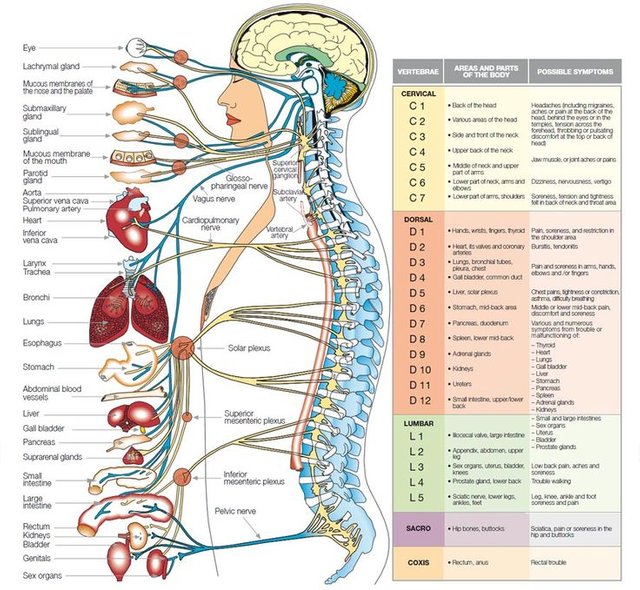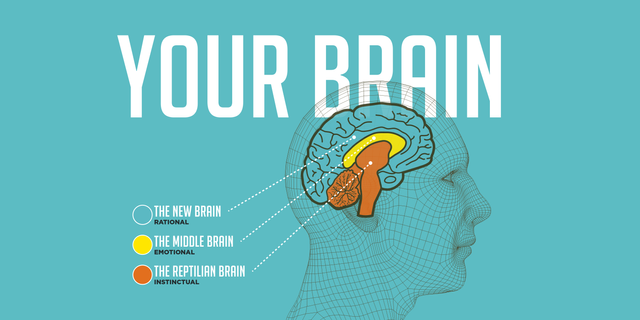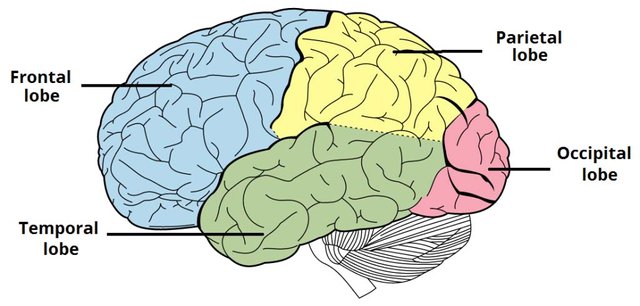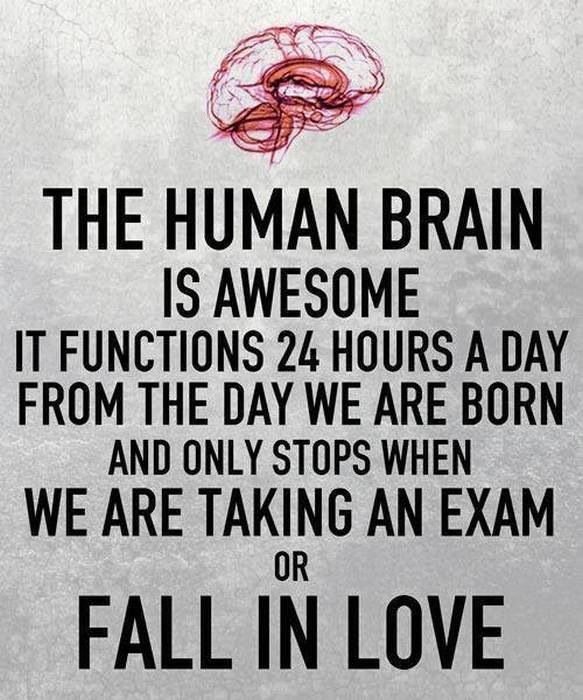Understanding The Great Nerve Centers of Human Body

Image Source
The great nerve centers which have a critical impact in the generation and articulation of mental states are those of the brain and spinal cord.
The Spinal Cord
The spinal cord is that cord or rope of nerve substance which is enclosed in the spinal column or spine. It leaves the lower some portion of the skull and expands descending in the inside of the spinal column for around eighteen inches. It is consistent with the brain, be that as it may, and it is hard to figure out where one starts and alternate closures. It is made out of a mass of dark issue encompassed by a covering of white issue.
From the spinal cord, along its length, rise thirty-one sets of spinal nerves which fan out to each side of the body and associate with the different littler nerves. stretching out to all parts of the framework. The spinal cord is the great focal link of the nervous transmitted framework, and any damage to or deterrent of it handicaps or incapacitates those parts of the body the nerves of which enter the spinal cord beneath the seat of the damage or block.
Wounds or hindrances of this kind not just repress the tactile reports from the influenced region, additionally hinder the motor impulses from the brain which are planned to move the appendages or parts of the body.
The Ganglia
What are known as ganglia, or small groups of nerve cells, are found in different parts of the nervous framework, including the spinal nerves. These gatherings of nerve cells are in some cases called little brains, and perform very critical workplaces in the instrument of thought and action. The spinal ganglia get tactile reports, and issue motor impulses, as a rule, without alarming the focal brain in regards to the issue. These activities are known as reflex nervous action.
Reflex Action
What is known as reflex nervous action is a standout amongst the most magnificent of the activities of the nervous and mental system, and the learning thereof normally comes as an astonishment to the normal individual, for he is for the most part under the feeling that these activities are conceivable just to the focal brain.
Not just is the focal brain truly a trinity of three brains, however that, notwithstanding these, each one has a great number of little brains disseminated over his nervous framework, any of which are fit for getting tactile reports and furthermore of sending forward motor impulses. It is very worth while for one to end up plainly familiar with this superb type of neuro-mental action.
A soot enters the eye, the report achieves a ganglion, a motor impulse is sent forward, and the eyelid closes. A similar outcome follows if a protest approaches the eye yet without really entering it. In either case the individual is not aware of the sensation and motor impulse until the point when the last has been proficient. This is reflex action.
The instinctual development of the stimulated foot is another occurrence. The yanking without end of the hand consumed by the lit end of the stogie, or pricked by the purpose of the stick, is another case. The automatic activities, and those known as unconscious activities, result from reflex action.
More than this, numerous activities initially willful move toward becoming what is known as acquired reflexes, or motor habits, by methods for certain nervous centers gaining the habit of sending forward certain motor impulses in light of certain tactile reports. The commonplace developments of our lives are to a great extent performed along these lines, as, for example, strolling, utilizing blade and fork, working typewriters, machines of assorted types, composing, and so on.
The squirming of a beheaded snake, the solid developments of an executed frog, and the brutal battles, shuddering, and jumps of the executed fowl, are occurrences of reflex action. Restorative reports demonstrate that in instances of beheading even man may show comparative reflex action now and again.
Subsequently we may see that we may feel and will by methods for our little brains and in addition by the focal brain or brains. Whatever mind might be, it is sure that in these processes it utilizes different segments of the nervous framework than the focal brain.

Image Source
The Three Brains
Medulla Oblongata
Cerebellum
Cerebrum
On the off chance that one wishes to restrain the mental action to cognizant scholarly exertion, at that point and after that lone is he redress in considering the cerebrum or substantial brain as the brain.
The Medulla Oblongata
The medulla oblongata is a broadening of the spinal cord at the base of the brain. Its office is that of controlling the automatic activities of the body, for example, breath, dissemination, absorption, and so on. In an expansive sense, its activities might be said to be of the idea of profoundly created and complex reflex activities.
It shows mostly through the thoughtful nervous framework which controls the key capacities. It doesn't have to approach the expansive brain in these issues, normally, and can play out its errands without the plane of standard awareness.
The Cerebellum
The cerebellum, otherwise called the little brain, lies simply over the medulla oblongata, and just underneath the back segment of the cerebrum or great brain. It consolidates the idea of a simply reflex center from one viewpoint, with that of habit mind on the other. To put it plainly, it fills a place between the activities of the cerebrum and the medulla oblongata, having a portion of the qualities of each.
It is the organ of various essential acquired reflexes, for example, strolling, and numerous other recognizable solid developments, which have first been intentionally acquired and afterward turned out to be habitual. The talented skater, bicyclist, typist, or mechanic relies on the cerebellum for the simplicity and sureness with which he plays out his developments without considering them.
One might be said never to have completely acquired an arrangement of solid developments, for example, we have specified, until the point when the cerebellum has assumed control over the errand and assuaged the cerebrum of the cognizant exertion. One's strategy is never idealized until the point when the cerebellum accept control and heading of the important developments and the impulses are sent forward from underneath the plane of conventional cognizance.

Image Source
The Cerebrum
The cerebrum, or great brain, is arranged in the upper part of the skull, and possesses by a wide margin the bigger bit of the hole of the skull. It is separated into two great divisions or hemispheres. The best of the cutting edge experts are concurred that the cerebrum has zones or zones of specific working, some of which get the tactile reports of the nerves and organs of sense, while others send forward the motor impulses which result in willful physical action.
A significant number of these zones or zones have been situated by science, while others stay up 'til now unlocated. The likelihood is that in time science will prevail in accurately finding the territory or zone of every single class of sensation and motor impulse.
The Cortex
The zone of thought, memory, and creative ability has not been plainly situated, aside from that these mental states are accepted to have their seat in the cortex or external thin skin of dark brain matter which envelopes and spreads the mass of brain substance. It is, besides, viewed as likely that the higher processes of thinking are performed in or by the cortex of the frontal projections.
The cortex of a man of normal insight, if spread out on a level surface, measures around four square feet. The higher the level of insight controlled by a lower creature or person, generally speaking, the deeper and increasingly various are the folds or convolutions of the cortex, and the better its structure. It might be expressed when in doubt, with yet not very many special cases, that the higher the level of knowledge in a lower creature or individual, the greater is the range of its cortex in extent to the measure of the brain.
The cortex, it must be recollected, is collapsed into deep furrows or convolutions, the brain fit as a fiddle, divisions, and convolutions looking like the internal bit of an English walnut. The inside of the two hemispheres of the cerebrum is made to a great extent out of connective nerves which surely serve to create and keep up the solidarity of capacity of the mental processes.
While physiological psychology has performed great work in finding brain-centers and clarifying a significant part of the instrument of mental processes, it has however touched the most rudimentary and straightforward of the mental processes. The higher processes have so far resisted investigation or clarification in the terms of physiology.

Image Source

Reference:
Your Mind and How to Use It
By: William Walker Atkinson
nice post :)
Downvoting a post can decrease pending rewards and make it less visible. Common reasons:
Submit
Thanks
Downvoting a post can decrease pending rewards and make it less visible. Common reasons:
Submit
Great post! In spanish there is a technique called "reflexologia". By stimulatting points in hands or your feet for example through a massage, a benefit for different organs in your body is made. Hope you find it useful! Bye
Downvoting a post can decrease pending rewards and make it less visible. Common reasons:
Submit
Thanks for the share.
Downvoting a post can decrease pending rewards and make it less visible. Common reasons:
Submit
I've had people tell me I have a lot of nerve.
This probably isn't what they're talking about.
Downvoting a post can decrease pending rewards and make it less visible. Common reasons:
Submit
Yeah right :)
Downvoting a post can decrease pending rewards and make it less visible. Common reasons:
Submit
You may find the 2nd video in @rok-sivante's post interesting.
AJ suffers from Parkinson's Disease and has had probes placed into his brain to relieve the symptoms.
https://steemit.com/technology/@rok-sivante/why-it-s-time-for-conspiracy-theorist-to-quit-fearing-brain-microchip-implants-grow-the-f-ck-up-and-get-to-work-contributing-to
It's quite remarkable.
Downvoting a post can decrease pending rewards and make it less visible. Common reasons:
Submit
great post..thank for your effort ..its really informative post..
Downvoting a post can decrease pending rewards and make it less visible. Common reasons:
Submit
Thanks. Glad you like it.
Downvoting a post can decrease pending rewards and make it less visible. Common reasons:
Submit
you welcome:))
Downvoting a post can decrease pending rewards and make it less visible. Common reasons:
Submit